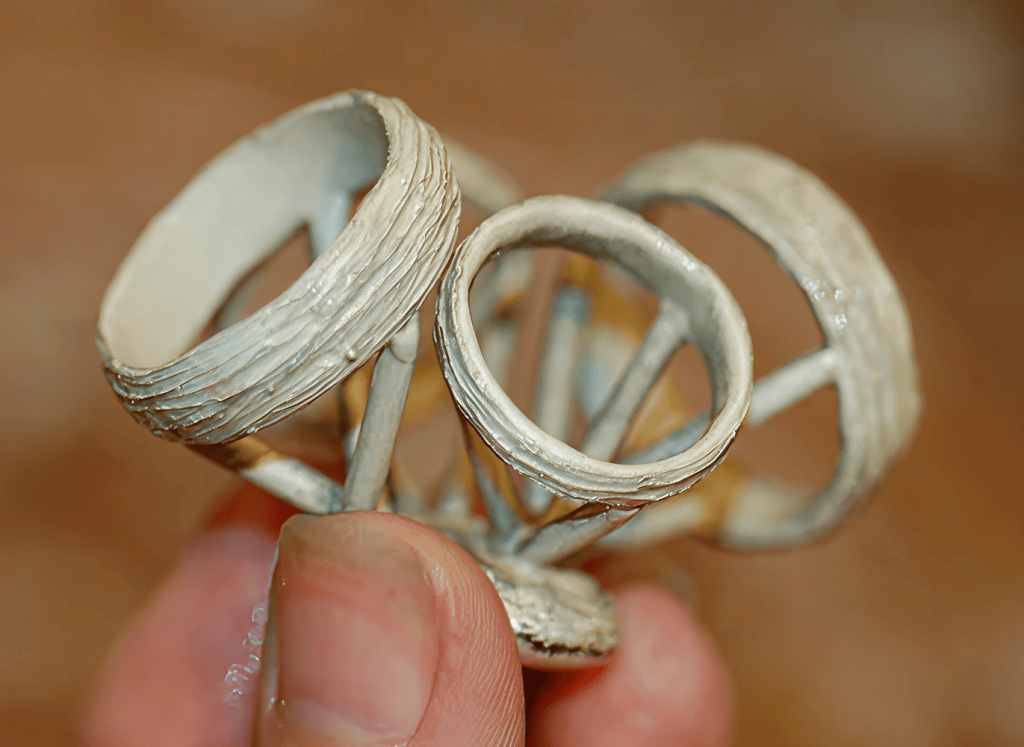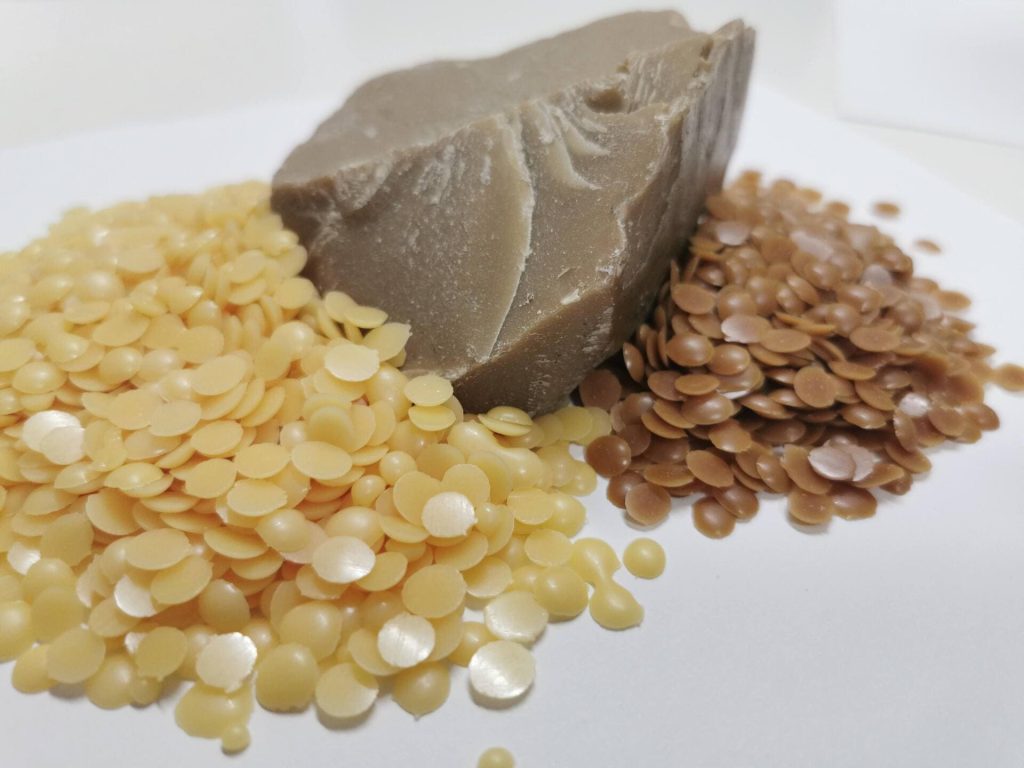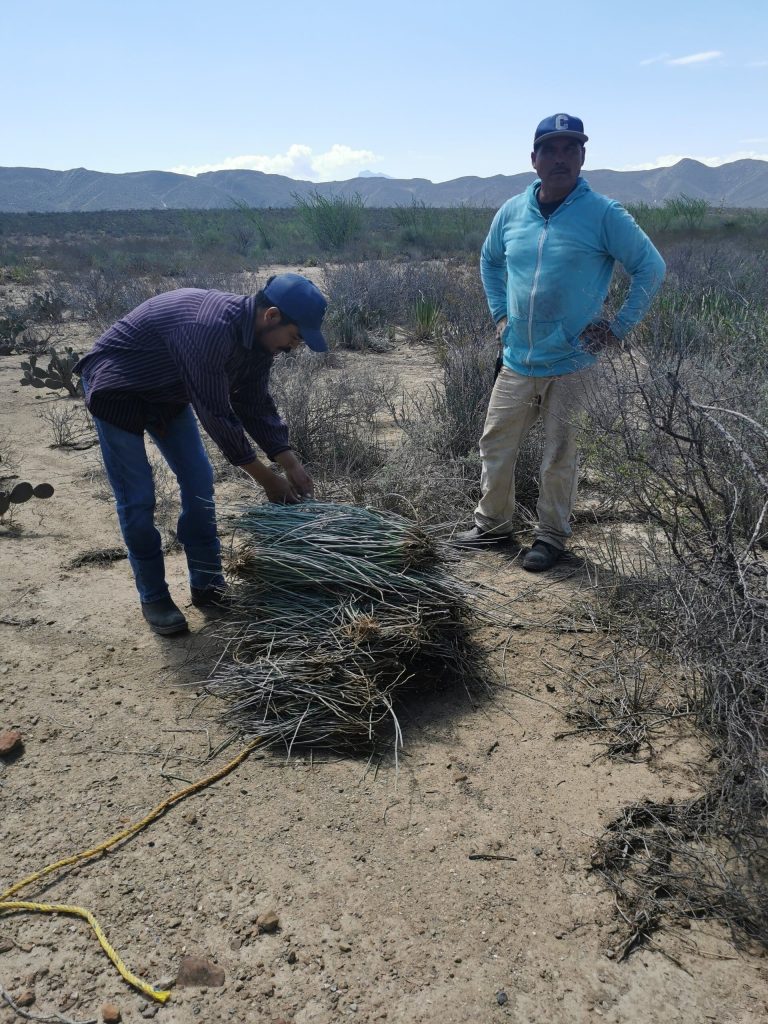Candelilla Wax
Collection and Distribution Process
Manufacturing
Collection and transportation of Candelilla
Normally, the Candelilla plant is pulled out by hand from the roots, although occasionally a sharpened stick may be used to facilitate digging out the plant. Bundles of 20-30 kg (44-66 lb) of cleaned Candelilla plants free of dirt, stones, weeds, etc. are prepared for transportation. Each donkey (burro) can typically carry between 60-90 kg (132-145 lb). Pickup trucks are also sometimes used. The plants are then brought to collection centers where the process for extracting the wax is carried out.
Traditional harvesting techniques
- The method used for the exploitation and distribution of the Candelilla plant is very rudimentary.
- Harvesters travel by donkeys (burros) or by truck to the areas where the Candelilla plant can be found in abundance.
- After gathering all the plants found in the area, they load them up and move to other nearby fields.
CHALLENGES AND DEDICATION
Long harvesting work
The “Candelilleros” work long, hard hours. They generally take more than five days to harvest the plants. The distances from gathering points to the collection centers can range from 25 to 150 km (15 – 100 miles).
FROM THE FIELD TO THE FINAL PRODUCT
Candelilla wax extraction
Candelilla wax extraction
To extract the wax, the Candelilla plants are placed in iron cauldrons – called “pailas” by the Candelilleros – with a mixture of water and sulfuric or citric acid. The batch of Candelilla immersed in acid-water is heated over a direct fire until the solution comes to a boil, at which time the wax is separated from the plant and fuses with the liquid. The sulfuric acid prevents the formation of an emulsion between the wax and water, which could occur due to the turbulence created by the boiling process. Using this technique, wax from the Candelilla plant floats to the surface in the form of foam.
Collection and separation of wax
The hot foamy wax is removed from the “paila” using utensils with openings called “espumaderas” (foamers), and is collected in steel tanks, buckets, conical holes in the floor or in clay molds placed on the floor. In any of these vessels, the hot foam (wax) is separated by decanting from a brown liquor which precipitates to the bottom of the vessel and is later recycled to a removal bucket.
Layer formation during extraction
In the intermediate part of the vessel, just on top of the aqueous phase, a fine layer of yellow-colored cream is formed. This is the Candelilla wax, known also as “cerote”. In the top part of the vessel, a third layer is formed which consists of a paste composed of ashes, bubbles and solid impurities. The plants, scalded by the boiling process, are used as fuel for the cauldrons, once they have been put out to be sun-dried.
Cooling and separation of impurities
The “cerote” is left to cool and solidifies at ambient temperature. The solid wax is hammered and broken into pieces, which are then melted to remove the impurities such as dirt and organic materials, which are separated from the wax by sedimentation. The wax, which is then decanted – free from impurities – is known as “raw Candelilla wax”; is then left to cool and solidify again.
Wax refining and bleaching
In order to refine the wax, it must again be broken up, melted and filtered through Fuller earth, activated carbon or some other filtration system. The refining can also include a bleaching stage, which uses hydrogen peroxide, or some other refining step for special applications.
CLIMATIC, GEOGRAPHICAL AND USE CONDITIONS
Factors affecting production
There are various factors that affect the production volume of Candelilla wax, as well as indicators of the yield in the extraction and final quality of the wax. Among these are:
Time of year
Climatic conditions
Rain levels
Soil composition
Frequency of exploitation
Altitude of the region
Collection, extraction and refining processes
STRUCTURAL AND CHEMICAL PROPERTIES
Properties
Physical properties
Candelilla wax is a complex substance of vegetal origin. It is hard, brittle and easily pulverized. Prior to refining, it has an opaque appearance. Once refined, its color can range from light brown to yellow depending on the degree of refining and bleaching. Its surface can reach high levels of brilliance once refined; which is one of the most valued properties of Candelilla wax for a variety of specialty applications. It easily dissolves basic dyes. It is insoluble in water but highly soluble in acetone, chloroform, benzene and other organic solvents.
Chemical composition
Most of the components of Candelilla wax are naturally found in vegetables and fruits. Its chemical composition is characterized by a high hydrocarbon content (around 50%) and a relatively low number of volatile esters. Its resin content can reach 40% by weight, a major factor contributing to its sticky consistency.
Chemical Composition of Refined Candelilla Wax.
|
% WEIGHT |
RAW |
REFINED |
|
Hydrocarbons |
46 |
57 |
|
Free alcohol |
13 |
14 |
|
Free acid |
7 |
7 |
|
Simple esters |
2 |
21 |
|
Hydroxyl esters |
8 |
8 |
|
Acid esters |
10 |
0 |
|
Diesters |
9 |
0 |
Candelilla wax exhibits very low contraction rates, which makes it ideal for precision foundries. It is highly adhesive and can be used in the formulation of cosmetics, polishes and waxes for furniture, leather, textiles and floors. When mixed with other waxes, it can be used in finishes for leather, textiles and cords, for lubricants and greases, adhesives in which the resin eliminates the slippery finish, and for paper and cardboard coatings. It can harden other waxes without significantly increasing the melting point of the mixture.
Physical-Chemical Properties of Candelilla Wax
|
RAW |
REFINED |
|
|
Acid value |
12-24 |
12-22 |
|
Iodine value |
19-45 |
14-27 |
|
Saponification number |
43-65 |
35-87 |
|
Melting point |
66-71ºC |
67-79ºC |
|
Refraction index |
1.4545 @ 71ºC |
1.4545-1.462 @ 85ºC |
|
Non-Saponifiable material |
65-67 |
67-77 |
|
Specific gravity |
0.982 |
0.885 |
|
Flame point |
241ºC |
— |
Composición Típica de la Cera de Candelilla Refinada
|
% WEIGHT |
% WEIGHT |
|||
|
Hydrocarbons |
50 – 57 |
Miricyclic alcohol |
ND |
|
|
Nonacosane |
2.5 |
Sitosterol and other sterols |
7 – 8 |
|
|
Hentriacontane |
46 – 46.5 |
Beta-Amirian acetate |
5 – 6 |
|
|
Tritriacontane |
2.5 |
Free acids |
7 – 9 |
|
|
Esters |
28 – 29 |
Linear chain |
6 – 7 |
|
|
Simple esters and lactones |
20 – 21 |
Cyclic |
ND |
|
|
Hydroxyl Esters |
6 – 8% |
Humidity |
0.5 – 1 |
|
|
Alcohols, Sterols and Resins |
12 – 14 |
Inorganic residues |
0.7 |
VERSATILITY IN INDUSTRIAL SECTORS
Applications
Candelilla wax offers a wide diversity of applications, and it is currently being used in more than 20 distinct industries worldwide – principally in the U.S., the E.U. and Japan. Its distinctive properties make it an essential raw material in the production of cosmetics, dyes, adhesives, coatings, shines and polishes, among others.

FDA approval
Candelilla wax is recognized by the U.S. Food and Drug Administration (FDA) as a safe natural substance – GRAS, Generally Recognized As Safe – for applications in the food industry. For this reason, it is widely used in a diversity of sectors in this industry.

Use in cosmetics and food
In the cosmetics industry, due to its protective properties, Candelilla wax is indispensable in an important range of formulas used in the production of lipsticks, body lotions and hair preparations. For its plastic properties, Candelilla wax is used in the production of chewing gum. Additionally, its oil retention properties help it to better conserve flavors. This wax has demonstrated its superiority over the majority of synthetic waxes used for this particular application.

Precision casting and molding
A specialty application can be found in the precision foundry and mold industry, known as lost wax casting, where, due to the extraordinary molding properties of Candelilla wax, it permits the precise reproduction of every detail required in these strict manufacturing processes.

Applications in electronics
Its chemical stability, high melting point, impermeability and low electrical resistance make it highly useful in the manufacture of a diversity of products for the electrical and electronic industries.



